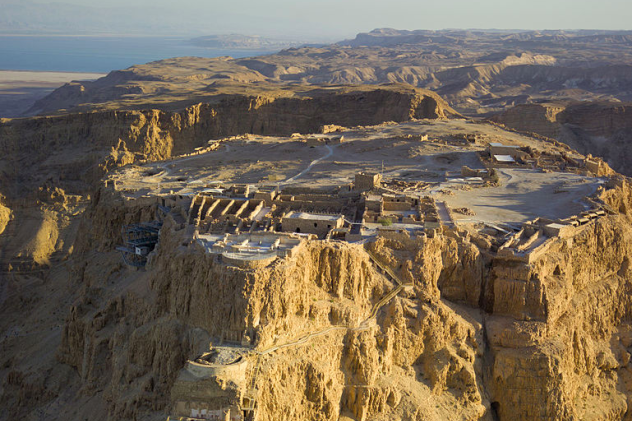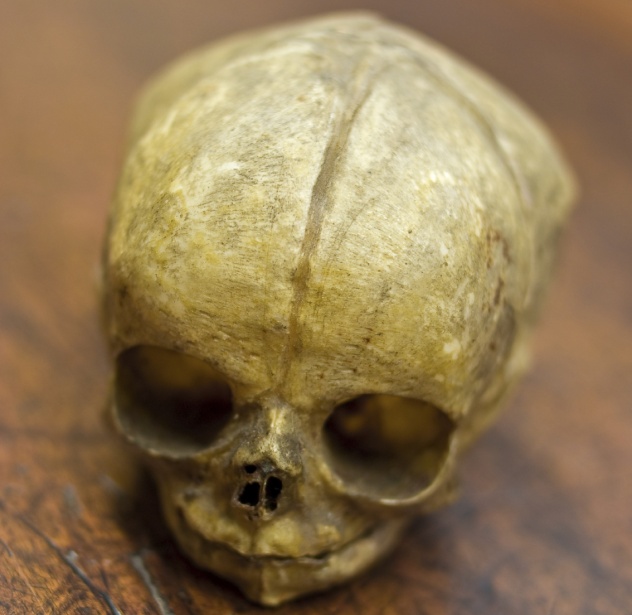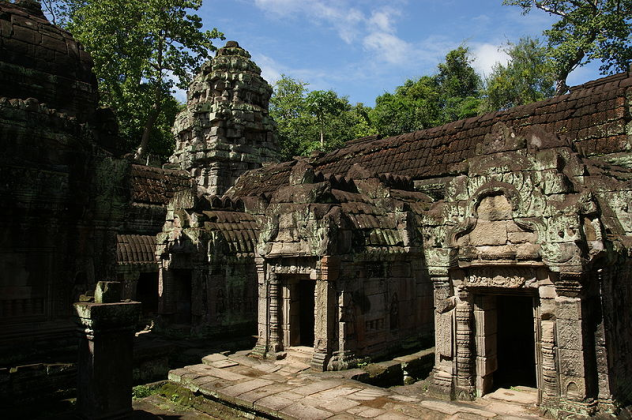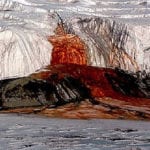 Politics
Politics  Politics
Politics  Weird Stuff
Weird Stuff Ten Bizarre Facts About The Doge Meme
 Our World
Our World 10 Ways Your Christmas Tree Is More Lit Than You Think
 Movies and TV
Movies and TV The 10 Coolest Stars to Set Sail on The Love Boat
 History
History 10 Things You Didn’t Know About the American National Anthem
 Technology
Technology Top 10 Everyday Tech Buzzwords That Hide a Darker Past
 Humans
Humans 10 Everyday Human Behaviors That Are Actually Survival Instincts
 Animals
Animals 10 Animals That Humiliated and Harmed Historical Leaders
 History
History 10 Most Influential Protests in Modern History
 Creepy
Creepy 10 More Representations of Death from Myth, Legend, and Folktale
 Politics
Politics 10 Political Scandals That Sent Crowds Into the Streets
 Weird Stuff
Weird Stuff Ten Bizarre Facts About The Doge Meme
 Our World
Our World 10 Ways Your Christmas Tree Is More Lit Than You Think
Who's Behind Listverse?

Jamie Frater
Head Editor
Jamie founded Listverse due to an insatiable desire to share fascinating, obscure, and bizarre facts. He has been a guest speaker on numerous national radio and television stations and is a five time published author.
More About Us Movies and TV
Movies and TV The 10 Coolest Stars to Set Sail on The Love Boat
 History
History 10 Things You Didn’t Know About the American National Anthem
 Technology
Technology Top 10 Everyday Tech Buzzwords That Hide a Darker Past
 Humans
Humans 10 Everyday Human Behaviors That Are Actually Survival Instincts
 Animals
Animals 10 Animals That Humiliated and Harmed Historical Leaders
 History
History 10 Most Influential Protests in Modern History
 Creepy
Creepy 10 More Representations of Death from Myth, Legend, and Folktale
10 Archaeological Mysteries That Have Been Solved
Every now and then, archaeologists make important discoveries. They unearth lost civilizations, find significant artifacts, or discover the remains of important historical figures. Most of the time, though, these remarkable finds are clouded in mystery. For various reasons, such as a lack of written historical records, many of these archaeological mysteries remain unresolved.
Thankfully, science and technology are continually advancing. With the help of these two valuable tools, archaeologists are able to conduct thorough examinations and better studies, enabling them to paint a better picture of the past. Slowly but surely, archaeologists are unraveling the many mysteries that have puzzled and fascinated people for centuries.
10 The Puquios Of Peru
Puquios are spiral, rock-lined holes located in the Nazca region of Southern Peru, the same area where the famous Nazca Lines are found. For decades, scientists were baffled over the origin and purpose of these mysterious structures. Carbon dating can’t be applied on the puquios, since the materials that were used to build them are identical to the surrounding terrain. Also, just like many South American civilizations, the Nazca didn’t have any written historical records.
In 2016, a team of Italian scientists from the Institute of Methodologies for Environmental Analysis finally unraveled the mystery of the puquios. After analyzing numerous satellite images, researcher Rosa Lasaponara and her colleagues found that these spiral, rock-lined structures were “part of a vast hydraulic system that carried water in underground canals to where it was needed—either to water crops or into populated areas as drinking water.” According to the researchers, the spiral holes served as ancient water pumps which provided water to the Nazca all year round. The Nazca lived in an area considered to be one of the most arid places on Earth, where droughts can last for years. They were able to survive and flourish in this harsh place by using the puquios for their water supply.
In addition, Lasaponara’s research also showed that the people who built the puquios were “extremely well organized” and “highly technically advanced.” These spiral, rock-lined holes were so meticulously constructed that several of them can still function today.
9 The Mummified Lungs Of Queen Arnegunde

In 1959, archaeologist Michel Fleury discovered the remains of Queen Arnegunde, a Merovingian royal and the mother of King Chilperic I, in the Basilica of St Denis in Paris. Along with the queen’s skeleton, Fleury also found jewelry, fragments of leather and textiles, and a strand of hair. But what made this find remarkable were the queen’s mummified lungs. Her body was “completely skeletonized,” but her lungs were well-preserved. Since the discovery of the queen’s mummified lungs, scientists have long sought to answer whether they were embalmed intentionally or mummified naturally. The mystery remained unresolved until recently.
An international team of researchers led by bio-anthropologist Rafaella Bianucci of the University of Turin examined the lungs of Queen Arnegunde, and they discovered that she was intentionally mummified. When the scientists conducted biochemical analysis, they found copper oxide and traces of benzoic acid in her lungs. Benzoic acid is normally found in plants, while copper, which has preserving properties, is usually used as jewelry. (The queen wore an ornate copper belt in her grave.) The researchers suggested that Queen Arnegunde might have possibly received an oral injection of liquefied spices or aromatic plants. Furthermore, they proposed that the “preserving properties of copper, combined with the spice embalming treatment, might have allowed the preservation of the lungs.”
Mummification through the use of aromatic plants and spices was common in France during the sixth century. The Merovingians learned the practice from the Romans, while the Romans got it from the Egyptians. But unlike the Egyptians, the method applied by the Merovingians was a bit crude. This could explain why only Queen Arnegunde’s lungs were well-preserved while the rest of her body was not.
8 The Cause Of Irtyersenu’s Death

Irtyersenu was an Egyptian who lived around 600 BC in the ancient city of Thebes. She was around 50 years old when she died. Irtyersenu rose to prominence after Augustus Bozzi Granville, a gynecologist, performed an autopsy on her mummified body in front of the Royal Society of London in 1825. Granville found a tumor on Irtyersenu’s ovaries, leading him to conclude that ovarian cancer caused her death. However, experts later concluded that the tumor was benign. If it wasn’t ovarian cancer, then what caused Irtyersenu’s death? That question that puzzled scientists for decades.
Wanting to unravel the mystery of Irtyersenu’s death, Mark Spigelman and Helen Donoghue of the University College London conducted a thorough reexamination of her mummified body. They found DNA and the cell wall molecules from Mycobacterium tuberculosis in Irtyersenu’s bones, gallbladder, and lungs. This finding led the researchers to conclude that she died of pulmonary tuberculosis. The disease, which is still a scourge today, was rampant during Irtyersenu’s time.
7 The Identity Of The Masada Remains

Masada is a desert fortress located in the Judaean Desert in Israel. This architectural wonder is famous for the Zealot mass suicide that occurred inside its walls nearly 2,000 years ago. The Zealots were a group of radical Jewish rebels who sought to overthrow the Romans occupying Israel.
Around the 1960s, a team of archaeologists led by Yigael Yadin conducted an excavation at Masada. While excavating a bathhouse at the site, they discovered the remains of three people, two male skeletons and a woman’s hair. Experts believed that the remains belonged to a Zealot family. In 1969, the government of Israel recognized the Masada remains as Jewish heroes and gave them state burials. The discovery was so sensational that it became part of the national mythology of Israel.
However, an analysis conducted by forensics expert Azriel Gorski and anthropologist Joe Zias showed that the skeletons were not Jewish. By using advanced forensic methodologies and a passage from the Bible, Gorski and Zias solved the mystery of the Masada remains.
An obscure passage in the book of Deuteronomy says that non-Jewish women captured during battles must have all their hair cut off. This was deliberately done to make them less attractive to their Jewish captors. When Gorski and Zias conducted a forensic analysis, they found that the woman’s hair was cut off with a sharp instrument while she was still alive, indicating that she was a non-Jewish prisoner. The presence of the woman’s hair together with the skeletons at the bathhouse indicated that the two male bodies were not Zealots but rather Roman soldiers.
6 The Phaistos Disc Of Crete
In 1908, a mysterious clay disc around 15 centimeters (6 in) in diameter was discovered in the Palace of Phaistos on the island of Crete. It displayed an undeciphered language on both sides. Scientists estimated that the mysterious disc might have been created during the middle or late Minoan Bronze Age, around 1700 BC.
Known as the Phaistos Disc, this enigmatic clay object has mesmerized and baffled scientists for decades. Experts initially suggested that the disc was some form of an early typewriter, “an early document of movable type printing.” This theory became the prevalent explanation until it was challenged by Gareth Owens of the Technological Educational Institute of Crete around 2014. He believed that the Phaistos Disc was a prayer to a certain Minoan deity.
It took Owens six years to discover some important words and the general message of the disc. He found that the most stable and valuable word in the Phaistos Disc was “mother,” leading him to believe that the mysterious object was dedicated to the mother goddess of fertility of the Minoan civilization. Owens added that one side of the disc was dedicated to a woman giving birth and the other to a pregnant woman.
5 The Identity Of The Durham Skeletons
In November 2013, two mass graves were discovered near the Durham Cathedral. The graves contained the bodies of between 17 and 28 men. These skeletons had remained untouched for over 300 years. When the discovery was made, archaeologists at Durham University were baffled as to the identity of these men, whom they estimated were 13 to 25 years old at the time of their death. The archaeologists conducted a thorough examination, and after 18 months, they finally solved the mystery.
The remains belonged to Scottish soldiers who were captured by Oliver Cromwell during the Battle of Dunbar in 1650, which was an exceptionally bloody battle. From Dunbar, the Scottish soldiers marched 160 kilometers (100 mi) to Durham, where they were imprisoned it the city’s castle and cathedral. Experts believe that the discovery of the two mass graves was just the tip of the iceberg. They suggest that around 1,700 Scottish prisoners are buried in Durham and that their mass graves are located under the buildings of Durham University.
4 The Vampire Burials Of Poland
In 2009, skeletons with rocks at their jaws or sickles around their necks were discovered in the Drawsko cemetery in Poland. Hundreds of years ago, people were very superstitious, and they believed that vampires would rise from the dead and attack the living. To prevent these so-called vampires from reanimating, people would take drastic, oftentimes disrespectful, measures.
When the vampire burials were discovered, scientists immediately concluded that they were not natives to the area. They suggested that this could have been the reason why the locals branded them as vampires. However, a new study conducted by Lesley Gregoricka from the University of South Alabama showed that the “outsiders” were in fact natives to the area. Gregoricka arrived at this conclusion after analyzing strontium isotopes found in the skeletons.
In the past, people used to believed that people tended to become a vampire if they were unbaptized, died violently, weren’t native to the area, or were the first to die of a plague. So if the remains were native to the area, what might have caused the townspeople to brand them as vampires? Gregoricka and her team suggested that the skeletons were the first victims of cholera, which had ravaged the area at the time. The scientists arrived at this conclusion after discovering that the skeletons had no signs of severe trauma or brutal death.
3 The Infant Skeletons Of Athens

While excavating the ancient city of Athens in the 1930s, archaeologists made a horrifying discovery: They found 450 infant skeletons inside a well located at the ancient city’s agora, or marketplace. Together with the dead babies were more than 100 skeletons of dogs and puppies. This finding was “unlike anything uncovered in the ancient world, unique in terms of both the number of dead babies and the inclusion of canine carcasses.”
Wanting to shed light upon this terrible find, experts proposed two theories. The babies could have died due to a plague, or they were victims of a mass infanticide. However, a new analysis conducted by biological anthropologist Maria Liston and her team from the University of Waterloo showed that the two long-held theories were both inaccurate. Their findings revealed that the babies died naturally but not from plague. Furthermore, One third of the babies died of meningitis, while the rest died due to diseases common at that time.
Liston’s study shed light upon the way the ancient Athenians treated their infants. Just like the Romans, the Greeks didn’t consider babies to be full individuals until they underwent a unique ceremony carried out seven to 10 days after their birth. Since the Greeks didn’t consider babies as full humans beings, dead ones were simply thrown away and not buried.
As for the dogs, Liston suggested that they were sacrificed before their carcasses were dumped into the well.
2 The Demise Of Angkor

For almost 500 years, the Khmer Empire ruled in the magnificent city of Angkor in Cambodia. With a land area of over 1,000 square kilometers (400 mi2) this once great metropolis is considered to be the largest urban area of the preindustrial world. Between the 14th and 15th centuries, the powerful kingdom mysteriously collapsed. Experts blamed overexploitation of the land and wars.
However, new research has suggested that Angkor might have collapsed due to prolonged droughts. Experts arrived at this conclusion after studying tree rings from Vietnam, which showed that the region suffered from long periods of droughts mixed with sporadic heavy rains. To combat droughts, the people of Angkor built complex networks of moats, embankments, reservoirs, and channels. These structures, known as barays, collected and stored water from the summer monsoons.
A team of researchers led by Mary Beth Day of the University of Cambridge studied the biggest reservoir in Angkor, the West Baray. She also collected various samples throughout the city. After analyzing the baray and the samples, the researchers were able to map 1,000 years of Angkor’s climate history. They found that even though Angkor had advanced water management systems to fight droughts it “was not enough to prevent its collapse in the face of extreme environmental conditions.”
1 The Huge Stones Of Angkor Wat

Speaking of Angkor, the once great metropolis is widely known around the world for housing the breathtaking temple of Angkor Wat. This religious complex was built by King Suryavarman II during the 12th century in honor of Vishnu, a Hindu god. However, it was later converted to a Buddhist temple some time around the 14th century.
Over the years, archaeologists have wondered over how the 5–10 million bricks used to build Angkor Wat were transported from a nearby mountain to the temple complex. Experts used to believe that the massive stones were transported to Tonle Sap Lake through canals and then rowed down another river to the temples. However, this route was impractical and arduous, spanning 87 kilometers (54 mi). Also, the stones would have been rowed against the current from Tonle Sap Lake to Angkor Wat.
Researcher Estuo Uchida of Japan’s Waseda University and his team wanted to resolve the mystery once and for all. After surveying the area and studying satellite images, they discovered 50 quarries and a new route consisting of a network of hundreds of roads and canals. This route was only 35 kilometers (22 mi), and it was more practical and less demanding. It also helped to explain how the people of Angkor were able to build such a complex structure within a relatively short period of time.
When not busy working with MeBook—an app that transforms your Facebook into an actual printed book—Paul Jongko spends his time writing interesting stuff and creating piano covers.








